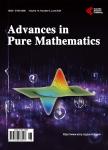The Physical Laws and Mathematical Axioms of the Brain’s OS and the Traditional Fundamental Laws of Thought of Logic and Philosophy
The Physical Laws and Mathematical Axioms of the Brain’s OS and the Traditional Fundamental Laws of Thought of Logic and Philosophy作者机构:Department of Egyptology and Assyriology Brown University Providence Rhode Island USA
出 版 物:《Advances in Pure Mathematics》 (理论数学进展(英文))
年 卷 期:2021年第11卷第12期
页 面:988-1039页
主 题:Aristotle Boole G. Brain’s OS Fundamental Laws of Thought Kolmogorov A. N. Laws and Axioms Leibniz G. W. Locke J. Logic Philosophy Rational Human Intelligence Venn J.
摘 要:This article presents four (4) additions to a book on the brain’s OS published by SciRP in 2015 [1]. It is a kind of appendix to the book. Some familiarity with the earlier book is presupposed. The book itself proposes a complete physical and mathematical blueprint of the brain’s OS. A first addition to the book (see Chapters 5 to 10 below) concerns the relation between the afore-mentioned blueprint and the more than 2000-year-old so-called fundamental laws of thought of logic and philosophy, which came to be viewed as being three (3) in number, namely the laws of 1) Identity, 2) Contradiction, and 3) the Excluded Middle. The blueprint and the laws cannot both be the final foundation of the brain’s OS. The design of the present paper is to interpret the laws in strictly mathematical terms in light of the blueprint. This addition constitutes the bulk of the present article. Chapters 5 to 8 set the stage. Chapters 9 and 10 present a detailed mathematical analysis of the laws. A second addition to the book (Chapter 11) concerns the distinction between the laws and the axioms of the brain’s OS. Laws are part of physics. Axioms are part of mathematics. Since the theory of the brain’s OS involves both physics and mathematics, it exhibits both laws and axioms. A third addition (Chapter 12) to the book involves an additional flavor of digitality in the brain’s OS. In the book, there are five (5). But brain chemistry requires a sixth. It will be called Existence Digitality. A fourth addition (Chapter 13) concerns reflections on the role of imagination in theories of physics in light of the ignorance of deeper causes. Chapters 1 to 4 present preliminary matter, for the most part a brief survey of general concepts derived from what is in the book [1]. Some historical notes are gathered at the end in Chapter 14.



